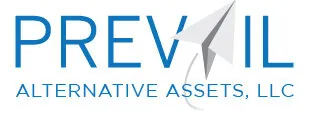Real estate investing is not only about building wealth through appreciation and income—it’s also one of the most tax-advantaged asset classes available. For accredited investors in Leawood and Kansas City, understanding and leveraging these tax benefits can enhance long-term returns. With proper planning, real estate can become a powerful tool for both income generation and tax efficiency.
Tax Deductions and Real Estate Income
One of the most attractive aspects of real estate investing is the ability to offset income through tax deductions. Property owners can deduct expenses such as mortgage interest, property taxes, maintenance costs, management fees, and insurance. These deductions lower the taxable income generated by the property, increasing net profits.
Perhaps the most beneficial deduction is depreciation. Even though a property may be appreciating in value, the IRS allows investors to depreciate its structure over a set period—27.5 years for residential and 39 years for commercial properties. This paper loss can reduce tax liability, even when a property is cash flow positive.
Utilizing 1031 Exchanges to Defer Taxes
A 1031 exchange allows real estate investors to defer capital gains taxes when selling a property by reinvesting the proceeds into another “like-kind” property. This strategy is particularly effective for investors aiming to grow their portfolios over time without triggering tax events.
In Leawood and Kansas City, where the real estate market offers both growth and stability, investors can leverage 1031 exchanges to transition from older, underperforming assets into more lucrative ones. Prevail AA can assist investors in identifying suitable replacement properties and ensuring compliance with IRS timelines and rules, which are critical to maintaining tax-deferred status.
Cost Segregation and Accelerated Depreciation
Another advanced tax strategy is cost segregation. This approach involves identifying and reclassifying components of a property—such as fixtures, flooring, and landscaping—that can be depreciated over a shorter time frame than the building itself. The result is accelerated depreciation, which further reduces taxable income during the early years of ownership.
For high-income earners in Kansas City, cost segregation can lead to tax savings and improved cash flow. When executed by professionals, this strategy can be integrated into a larger tax plan to optimize investment performance.
Offsetting Passive Income and Long-Term Planning
Passive real estate income can also be offset by passive losses, allowing investors to reduce overall tax burdens. In some cases, real estate losses can be used to offset other types of income, depending on the investor’s tax status. Real estate professionals may even qualify for additional deductions under current tax laws.
Planning for the long-term, investors can also take advantage of estate planning strategies involving real estate. Properties can be passed on to heirs with a stepped-up basis, which reduces capital gains taxes if the property is later sold.
Conclusion
Real estate remains one of the most tax-efficient investment options available to accredited investors. In growing markets like Leawood and Kansas City, leveraging strategies such as depreciation, 1031 exchanges, cost segregation, and passive income offsetting can enhance after-tax returns. Firms like Prevail AA offer the expertise to help investors maximize these benefits and structure their portfolios for optimal performance. For those serious about building wealth and minimizing tax exposure, real estate is an invaluable asset.














